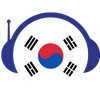Hangang Park – A riverine retreat with diverse recreational amenities.
In the heart of Seoul, there exists an oasis. Not just of trees, water, or grass, but an oasis of memories, shared experiences, and daily life. It's where old meets new, tradition melds with modernity, and urbanity embraces nature. Welcome to Hangang Park, Seoul's riverine jewel.
The Pulse of Seoul: The Han River
To truly understand the essence of Hangang Park, one must first understand the Han River. Meandering through Seoul, the Han River is more than just a water body – it's the city's pulse. For centuries, the river has played a pivotal role in shaping the region's culture, trade, and geography. This 494 km long river begins from the eastern mountains and flows westward, nourishing the capital before it makes its way to the Yellow Sea.
Hangang Park: More than Just Greens and Blues
The Hangang Park is not just a singular entity but a magnificent confluence of several green expanses. Spanning both banks of the Han River, Hangang Park is an amalgamation of 12 distinct parks. These interconnected parks stretch across different districts of Seoul, each offering its unique ambiance and recreational facilities. From Gwangnaru and Jamsil to Ttukseom, Banpo, the sprawling Yeouido Park known for its iconic cherry blossom festivals, the newly inaugurated botanical garden fostering diverse plant life, and the grand World Cup Park, a testament to Seoul's sporting legacy. The tapestry of Hangang Park is as diverse as it is expansive. This intricate network of parks allows visitors to seamlessly journey from one space to another, experiencing varied landscapes, activities, and atmospheres, all while staying within the embrace of the Han River's serenity.Established in the 1980s, what was once a neglected riverside area transformed into a haven for Seoul's residents and visitors.
But this transformation wasn't just about landscaping. It was about reclaiming space, about fostering connections, and about offering a respite from the city's frenetic pace. Today, the park hosts a plethora of recreational amenities: cycling tracks, picnic areas, swimming pools, and even a marina for water sports.
Modern Amenities Amidst Natural Beauty
Modern infrastructure seamlessly blends with nature in Hangang Park. The floating islands of Some Sevit near Banpo Bridge are a testament to this blend, offering cultural spaces and restaurants. Multi-purpose sports facilities, skate parks, and even a golf range cater to various recreational demands.
The park's extensive cycling track, spanning over 80 km, is a crowning achievement. It connects to other regional routes, making it possible to cycle from Incheon to Paldang.
Comparative Urban Marvels: Hangang and Beyond
In the global context, Hangang Park finds its peers in New York's Central Park, London's Hyde Park, and Singapore's East Coast Park. While Central Park serves as an urban escape with its wooded areas and meadows, and Hyde Park resonates with historical significance, Hangang Park is unique in its riverine essence, seamlessly integrating the water's tranquility with Seoul's dynamic spirit.
The Future of Hangang Park
What does the future hold for this urban haven? There's a palpable push towards sustainability, community, and innovative use of space. Proposals include the establishment of more eco-friendly zones, integrating local flora and fauna, and fostering community-driven projects.
Yet, amidst these future plans, there's a clear commitment to preserving the park's core essence: a place of respite, recreation, and reflection. The focus remains on balancing urban demands with environmental needs.
Pedal Passages: The Cycling Charm of Hangang Park
Cycling along the Hangang is an experience cherished by both locals and tourists. Boasting over 80 kilometers of dedicated bike paths, Hangang Park offers an uninterrupted journey that hugs the contours of the Han River. These paths provide an unparalleled opportunity to traverse the city, connecting major districts and landmarks, and extending beyond to regions such as Incheon and Paldang. The well-maintained tracks, interspersed with rest areas and rental stations, make cycling accessible to all. On any given day, thousands of Seoulites and foreign visitors alike can be seen pedaling their way along these paths. For many Koreans, it's a daily ritual, a blend of exercise and relaxation, while for tourists, it's a unique way to explore the city. The popularity of cycling in Hangang Park is evident in the myriad of cyclists that choose its trails daily, creating a vibrant tapestry of enthusiasts, casual riders, and curious explorers.
In Essence
Hangang Park stands as a symbol of Seoul's commitment to its citizens, offering a space that nurtures both the body and the soul. It's not just a place to visit, but a space to experience, to breathe, and to connect. As cities around the world grapple with the challenges of urbanization, Hangang Park offers a beacon – showing that with vision, commitment, and community involvement, urban spaces can truly flourish.

